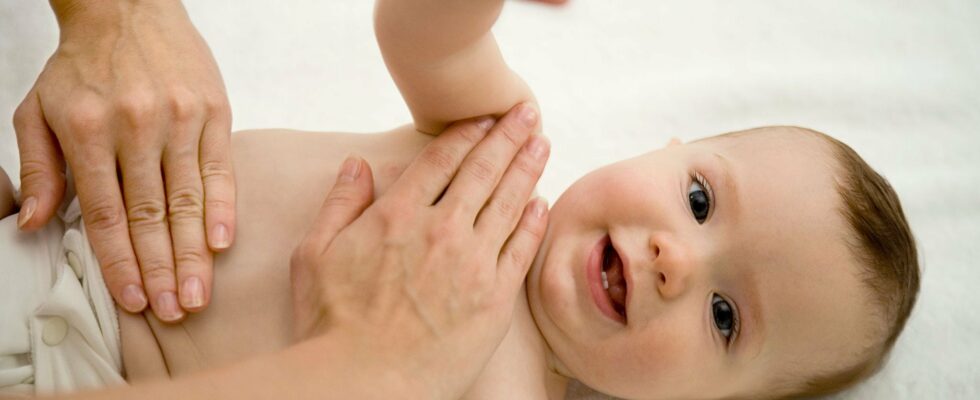Osteopathy is too often recommended for babies despite the lack of evidence as to its benefits and its absence of risks, the Academy of Medicine regretted this Tuesday, December 3, calling for these practices to no longer be promoted in maternity wards.
“Osteopathy practices, described as ‘visceral and cranial’, are offered to parents for their newborn […] for symptoms as banal as difficult feedings, night crying, constipation, colic, bloating, snoring, anxiety or ear infections”, noted the Academy in a press release.
However, these practices are “without proven scientific basis”, with “unproven” effectiveness and safety, recalls this institution whose opinions have no legal status but have reference value on a medical level.
Osteopathy is certainly not reimbursed by Social Security. But it is, in fact, integrated into the health system because, in maternity wards and PMI centers, it is common for parents to be recommended to consult an osteopath. The Academy notably reports advertisements in maternity wards, a situation which it considers unacceptable given the lack of interest demonstrated in babies.
“Non-medical alternative practices”
The institution highlights both “the particularly fragile population of newborns” and the tendency of many parents to be seduced by “non-medical alternative practices”. She therefore calls for avoiding this type of announcement in maternity wards, for requiring the presence of doctors specializing in perinatal care in the training of osteopaths, and for better monitoring of the adverse effects of these practices on babies. As for the multiple claims made by osteopaths regarding babies’ health, they should be subject to an “objective evaluation”, according to the Academy.
This opinion is published in a broader context where osteopathy, which promises to restore numerous dysfunctions in the body through bodily manipulations, is enjoying persistent success in France but has not seen its benefits demonstrated by studies in solid methodology. At best, these do not show any particular interest compared to classic physiotherapy. A study, published in 2021 in JAMA Internal Medicine and carried out on hundreds of patients suffering from back pain, notably compared osteopathy with fanciful techniques serving as a placebo. The difference was “probably not clinically significant.” “Adverse effects following osteopathy have been reported with some regularity and include cauda equina syndrome [NDLR : une compression des nerfs de la zone inférieure de la colonne qui peut causer des sciatiques, une atrophie musculaire ou de l’incontinence]lumbar disc herniation, fracture and hematoma or hemorrhagic cyst”, also recalled from 2022 our scientific columnist Professor Edzard Ernst.
